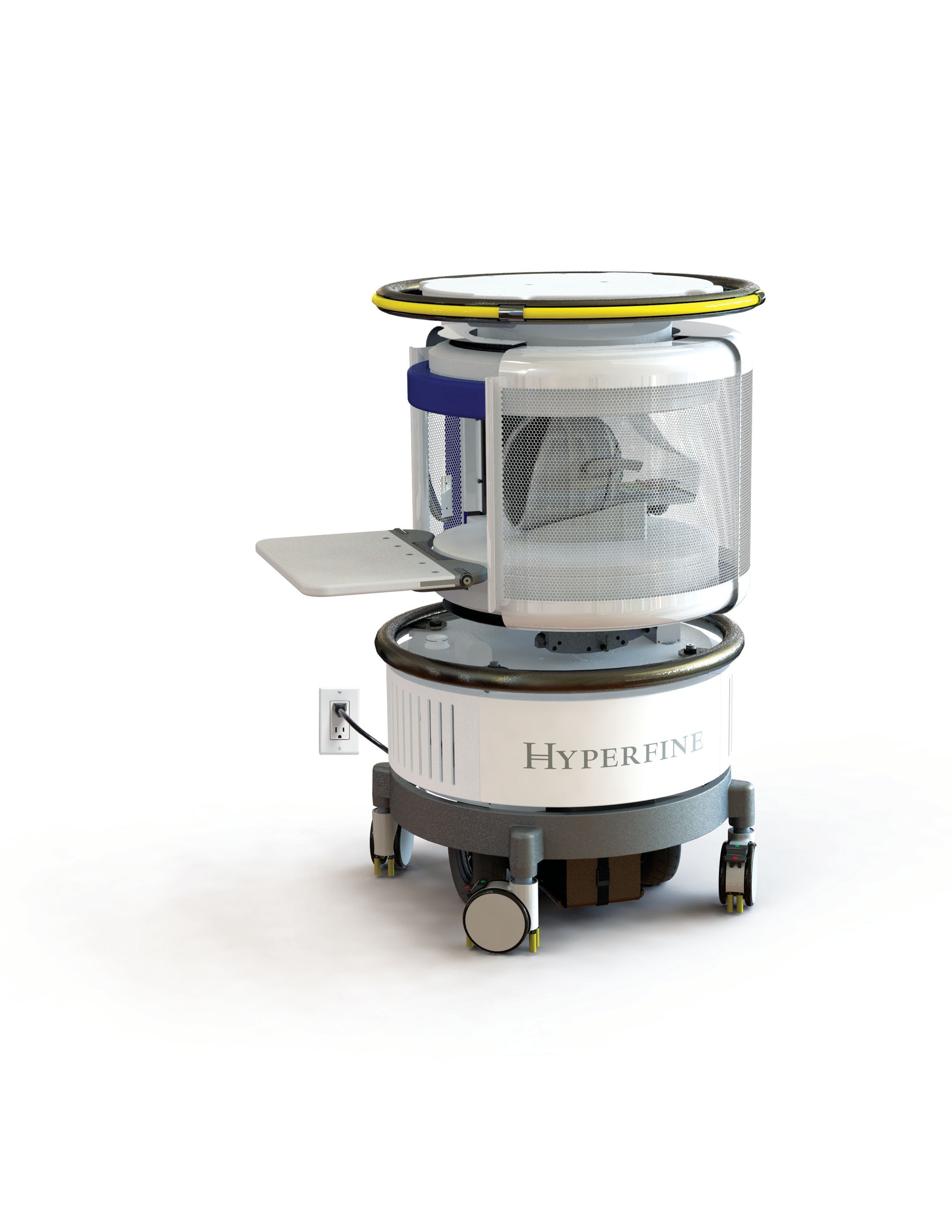Portable, Low-Field MRI Equivalent to Conventional Imaging in Patients with Brain Injury
Point-of-care, 64mT MRI performs as well as conventional CT and MRI while improving patient safety.
Using a portable, low-field MRI system to assess patients in the intensive care unit (ICU) for brain injury works equally as well as traditional imaging measures, a new study as revealed.
By using a 64 mT MRI that can plug into a standard electrical outlet in any room, a team of researchers from Yale New Haven Hospital successfully detected neuroimaging findings present in patients who were both positive for COVID-19 and infection free. The patients, said the team led by Kevin Sheth, M.D., division chief of neurocritical care and emergency neurology, experienced no complications or adverse effects from the point-of-care system.
The team published their findings Tuesday in JAMA Neurology.
“These findings demonstrate for the first time – to our knowledge – the deployment of a portable MRI to the bedside of patients with critical illness,” they wrote. “In acute neurological settings, it is well established that non-invasive, time-sensitive neuroimaging is the cornerstone of triage and treatment pathways.”
Traditional MRI that requires patient transport can jeopardize patient safety due to the magnetic fields, as well as potentially compromise monitoring equipment, endanger venous access, and risk endotracheal tube displacement. A portable, bedside system eliminates those challenges, the team said.
Related Content: MRI Room Service: Portable Machine Brings In-Room Scans to Stroke Patients
Alongside these safety advantages, the team also set out to see whether the portable system could effectively pinpoint neurological abnormalities. To conduct this assessment, they performed point-of-care, low-field exams on 50 patients – 34 men and 16 women – who were admitted to either the neurological ICU or COVID-19 ICU at Yale New Haven Hospital between Oct. 30, 2019, and May 20, 2020. These patients had neurological injury or alterations and no contraindications for conventional MRI.
Hyperfine Portable MRI

According to Sheth's team, 20 patients were diagnosed with COVID-19 via the RT-PCR test, and the rest had ischemic stroke (9 patients), hemorrhagic stroke (12 patients), subarachnoid hemorrhage (2 patients), traumatic brain injury (3 patients), and brain tumor (4 patients). All patients underwent 64 mT scans with the Hyperfine point-of-care system. Of the group, 37 underwent T1-weighted MRI, 48 had T2-weighted MRI, 45 underwent fluid-attenuated inversion recovery (FLAIR), and 32 had diffusion-weighted imaging. All scans were conducted an average of five days after ICU admission.
In addition, a number of patients also received conventional imaging. Of the 30 patients who were infection free, 6 had CT and 23 had MRI. Of the 20 COVID-19 patients, 8 had CT, and 3 had MRI.
Based on the team’s analysis of all the scans, the portable MRI system detected neurological finding in 29 out of 30 infection-free patients (97 percent). These findings also corresponded to the performance of conventional imaging except for one patient for whom the portable scan did not identify a diffuse subarachnoid hemorrhage. The portable system performed equally as well with COVID-19 patients, pinpointing neurological findings in 8 of 20 patients (40 percent), including intracranial hemorrhage, cerebral infarction, diffuse cerebral edema, and leukoencephalopathy. These results were in agreement with the conventional imaging tests.
“This single-center series of patients with critical illness in an intensive care setting demonstrated the feasibility of low-field, portable MRI,” the team said. “These findings demonstrate the potential role of portable MRI to obtain neuroimaging in complex clinical care settings.”
While the results do point to the ability of the system to function in a variety of care environments, Sheth's team still concluded that additional multi-center research is needed to assess brain pathology at fixed points.
“This approach may hold promise for portable assessment of neurological injury in other scenarios,” they said, “including the emergency department, mobile stroke units, and resource-limited environments.”
Emerging AI Algorithm Shows Promise for Abbreviated Breast MRI in Multicenter Study
April 25th 2025An artificial intelligence algorithm for dynamic contrast-enhanced breast MRI offered a 93.9 percent AUC for breast cancer detection, and a 92.3 percent sensitivity in BI-RADS 3 cases, according to new research presented at the Society for Breast Imaging (SBI) conference.
Could AI-Powered Abbreviated MRI Reinvent Detection for Structural Abnormalities of the Knee?
April 24th 2025Employing deep learning image reconstruction, parallel imaging and multi-slice acceleration in a sub-five-minute 3T knee MRI, researchers noted 100 percent sensitivity and 99 percent specificity for anterior cruciate ligament (ACL) tears.